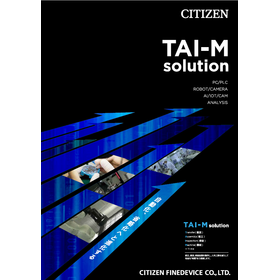Freed from on-site visual inspection work! Equipped with unique optical technology.
We would like to introduce our appearance inspection machine, the 'SE1000/100'. The "SE1000" is equipped with an optical camera unit that achieves high-precision inspection, and it realizes high-speed inspection with a linear motor and a high-rigidity frame. The "SE100" features a compact body. Typical defect detections include scratches, dents, chips, voids, rust, and excessive material. 【Software Options】 ■ Offline system software ■ Repair system software ■ CCC ■ SPC ■ QT *For more details, please download the PDF or feel free to contact us.
Inquire About This Product
basic information
【Specifications (Excerpt)】 <SE1000> ■ Camera: 12 million pixel CMOS color camera (optional) ■ Lighting Unit: White LED 3-stage (top, middle, bottom) + coaxial lighting ■ Inspection Time ・2D: 0.25 seconds or less ・2D + i3D: 0.75 seconds or less ■ Usable Work Size: 300×600×300mm *For OP transport, 600×600×300mm ■ Operating Axes: XY axis (standard), Z axis (optional) *For more details, please download the PDF or feel free to contact us.
Price range
Delivery Time
Applications/Examples of results
For more details, please download the PDF or feel free to contact us.
catalog(1)
Download All CatalogsCompany information
In the 1980s, surface mount components that responded to the miniaturization of electronic products emerged, and we designed and sold "adhesive curing devices" to coincide with the sale of adhesives for temporarily fixing chip components. We also established a double wave flow soldering method and designed and sold "flow soldering devices compatible with mixed chip components," using Koki flux, which maintains high soldering quality. In the 1990s, with the spread of the concept of environmental conservation, there was a demand for mounting technologies in the manufacturing processes of electronic products that do not adversely affect the environment. To respond to this background, we engaged in the development of solder flow methods applicable to no-clean flux for electronic substrates and the design and sale of "alternative fluorocarbon cleaning devices" compatible with non-fluorocarbon cleaning. In recent years, to meet the demand for "lead-free soldering methods" since 1998, we have been striving to develop technologies for lead-free "flow soldering devices," "reflow devices," and "partial/local dip devices" that can ensure soldering quality on par with conventional "tin/lead solder mounting."









